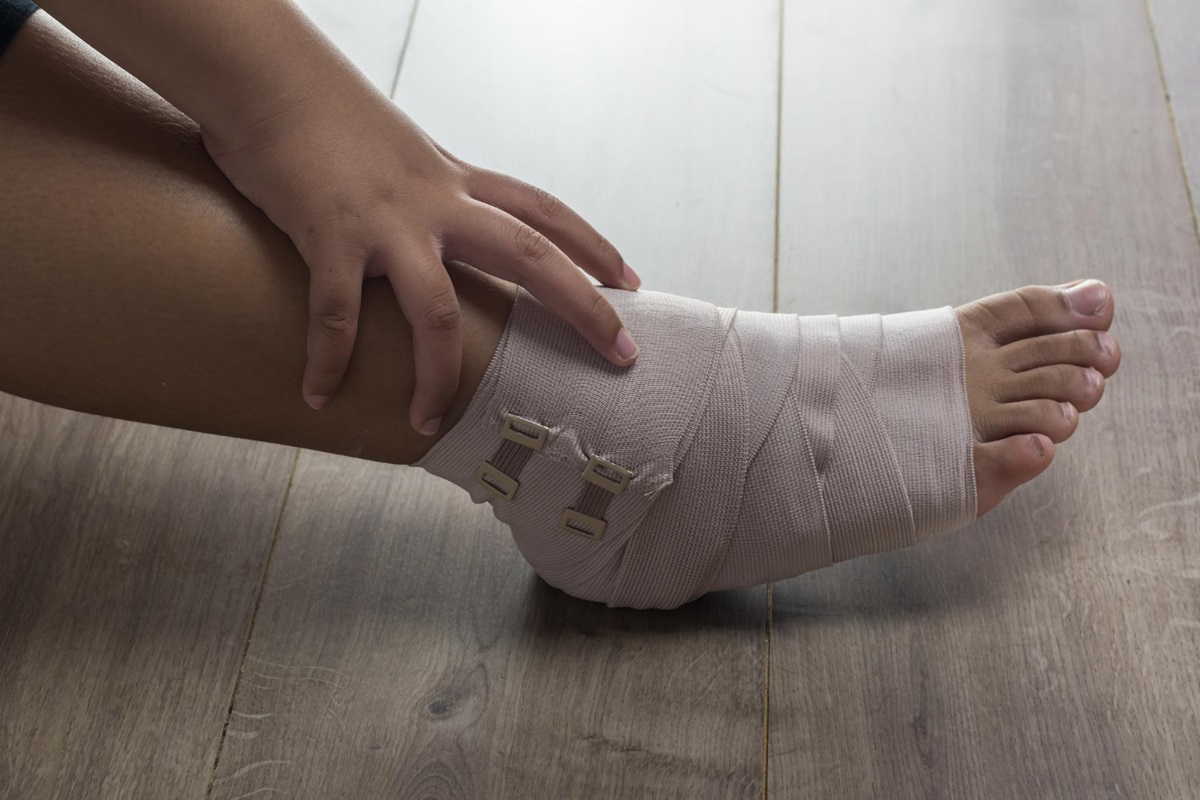Foot pain that doesn’t go away could be more serious than you think. Foot fractures and stress injuries are common in people of all activity levels—from athletes to everyday walkers—and are often underdiagnosed or mistaken for minor soreness. If left untreated, even small fractures can worsen over time, leading to long-term issues like mobility problems, …
Foot pain that doesn’t go away could be more serious than you think. Foot fractures and stress injuries are common in people of all activity levels—from athletes to everyday walkers—and are often underdiagnosed or mistaken for minor soreness. If left untreated, even small fractures can worsen over time, leading to long-term issues like mobility problems, non-healing injuries, or chronic pain. In this blog, we’ll explore the types of foot fractures, how to spot them early, treatment for stress fracture in foot, and effective prevention strategies. Whether you’re recovering from a recent injury or trying to avoid one, understanding the basics of foot stress fractures and acute breaks can help you stay healthy and mobile.
What Is a Foot Fracture?
As populations continue to age worldwide, the prevalence and impact of foot fractures remain a significant public health concern. These injuries contribute not only to individual discomfort and mobility loss but also place a considerable burden on healthcare systems globally.
A foot fracture occurs when one or more bones in your foot break due to trauma, repetitive stress, or underlying health conditions like osteoporosis or low bone density. Because the foot has 26 bones—including metatarsals, phalanges, the calcaneus, navicular, talar, and sesamoids—fractures can vary significantly depending on the location and severity.
The Difference Between a Break, a Crack, and a Stress Injury
Many people use the terms “break” and “fracture” interchangeably, and technically they mean the same thing—a disruption in the continuity of the bone. However, not all fractures are the same. A crack may be small and non-displaced, while a foot stress fracture results from overuse, leading to tiny fissures that worsen without proper care. A displaced fracture may require realignment or reduction surgery, and an open fracture—where the bone pierces the skin—may need urgent intervention.
Why Even “Small” Foot Fractures Shouldn’t Be Ignored
Minor fractures are often brushed off, especially when pain is mild. But untreated injuries can worsen, leading to non-union, altered appearance of your foot, or the need for bone-grafting procedures. Ignoring a small stress fracture can also result in a complete break that requires surgery, boot immobilization, or extended physical therapy. Early intervention and diagnosis with x-rays, CT scans, or MRI can make a significant difference.
Foot Stress Fractures: The Silent Injury
Stress fractures are among the most frequently overlooked foot fractures, especially in people who stay active despite discomfort.
What Causes Stress Fractures in Active Adults
A foot stress fracture is typically caused by repetitive stress from activities like running, jumping, or marching. Common contributing factors include high-impact sports, poor training techniques, inappropriate footwear, or sudden increases in activity. Bone conditions like osteoporosis and low vitamin D levels also increase risk.
How Stress Fractures Feel Compared to Sudden Breaks
Unlike a traumatic foot fracture from a fall or motor vehicle accident, stress fractures develop gradually. Symptoms start as a dull ache during activity and often improve with rest. You may experience tenderness, throbbing pain, or swelling over a specific area. These subtle signs often delay diagnosis and prolong healing.
Symptoms: How to Tell If Your Foot Might Be Fractured
Foot-related orthopedic injuries are among the most frequently encountered in clinical practice. In fact, injuries involving the foot account for nearly 40% of all lower extremity trauma cases, emphasizing the need for timely recognition and appropriate intervention.
Not all foot fractures are obvious. Recognizing early warning signs can lead to better outcomes.
Early Signs Most People Miss
Mild bruising, inflammation, or localized pain may seem unimportant, but these can be early indicators of a stress fracture. You might also experience difficulty walking, tenderness, or discomfort when wearing tight shoes. If these symptoms persist, consult a foot and ankle surgeon or orthopaedic specialist for evaluation.
When Pain, Swelling, or Bruising Point to a Bigger Problem

Severe pain, difficulty bearing weight, or visible deformity of the bone may signal a more serious injury like a comminuted fracture or Lisfranc fracture. Other red flags include numbness, redness, swelling, or trouble with walking. These require immediate care and often imaging tests such as foot x-ray, CT scan, or MRI to confirm.
Getting a Diagnosis: What Really Happens in the Exam Room
Understanding how foot fracture treatment begins starts with knowing the diagnostic process.
What Your Podiatrist Is Looking (and Feeling) For
At Wisconsin Foot & Ankle Clinic, a comprehensive physical examination includes checking for tenderness, swelling, alignment issues, and strength. A detailed medical history helps identify risk factors like prior sports injuries, overuse, or bone density issues. Your podiatrist may also assess your gait and weightbearing capacity.
Do You Need an X-Ray or Something More Detailed?
Initial x-rays help identify displaced or visible fractures. For subtler injuries like a foot stress fracture, advanced imaging such as CT scan or MRI can reveal damage to soft tissues, supporting muscles, or less visible bones like the navicular or talus.
Treatment for Stress Fractures and Other Foot Breaks
A clear diagnosis guides effective treatment. Plans range from conservative care to surgery, depending on the injury.
When Rest Is Enough—and When It’s Not
Mild foot stress fractures often respond well to RICE protocol, including rest, ice, compression, and elevation. Your doctor may recommend specialized shoes, crutches, or a walking boot to relieve pressure. Nutritional support like vitamin D supplements may also aid bone healing.
Walking Boots, Taping, or Surgery? What the Evidence Says
More severe injuries, such as displaced fractures or intra-articular fractures, may require cast, splint, or surgical intervention. Depending on the case, treatment may involve bone grafting, fixation surgery, or fusion of the joint. Our team at Wisconsin Foot & Ankle Clinic designs each approach as part of an individualized recovery plan.
What Recovery Actually Looks Like Day-to-Day
Recovery from a foot fracture depends on its type and severity. Most patients spend 6–8 weeks in a boot, cast, or post-operative shoe, followed by physical therapy focused on specific exercises to rebuild strength and improve mobility. Staying consistent with care prevents complications like non-union or chronic instability.
Life After a Foot Fracture: What to Expect
Proper healing sets the stage for a full return to activity.
When Can You Walk Normally Again?
Mild stress fractures may heal in 4–6 weeks with supportive care. More complex fractures like Lisfranc fractures or calcaneal fractures may require 8–12 weeks or longer. Your return to walking will be gradual and may include periods in a boot or cast followed by rehab.
Avoiding Re-Injury: What We Tell Our Patients That You Won’t Hear Online
We educate patients on sports and safety tips, shoe replacement, and correcting poor training techniques. Using supportive sneakers, avoiding clutter at home, and following a structured physical therapy program can prevent repeat injuries.
How to Prevent Foot Fractures in the First Place

Staying proactive helps you avoid painful setbacks.
The Footwear Mistake That Leads to Most Overuse Injuries
Worn-out shoes offer little cushioning or arch support, increasing the risk of overuse injuries. Choose appropriate footwear designed for your activity and foot shape. Consider periodic shoe assessments or switching to orthopedic-friendly designs.
How to Train Without Overloading Your Bones
Progress slowly with any new exercise routine. Include balance training, cross-training, and adequate rest between high-impact sessions. Focus on exercises that strengthen supporting muscles around the foot and ankle.
Nutrition, Fatigue, and the Role of Bone Density
Bone health starts from within. A diet rich in calcium, vitamin D, and protein supports recovery and helps prevent stress fractures. Avoid training when fatigued and get adequate sleep to allow your body to rebuild bone and tissue.
Why Patients Come to Wisconsin Foot & Ankle Clinic for Foot Fracture Care
Patients choose Wisconsin Foot & Ankle Clinic because we offer more than just diagnosis—we provide a partnership for recovery. Our board-certified foot and ankle surgeons and orthopaedic specialists deliver comprehensive care, from injury prevention to post-op rehab. Whether you’re managing a simple toe fracture or a complex comminuted fracture, we guide you every step of the way.
Conclusions
Foot fractures and foot stress fractures are more common than you may think—and ignoring them can lead to lasting damage. With early recognition, the right foot fracture treatment, and a preventive mindset, you can avoid complications and get back to the activities you love. Trust the experts at Wisconsin Foot & Ankle Clinic for personalized, proven care. Contact us today!
FAQs
Can you walk on a fractured foot?
In some cases, yes—but it’s not advised. Walking on a fractured foot can worsen the injury and delay healing. Always consult a podiatrist or orthopaedic surgeon before resuming activity.
How do I tell if my foot is fractured?
Common signs include localized pain, swelling, bruising, and difficulty bearing weight. If symptoms persist or worsen, a foot x-ray, CT scan, or MRI is recommended.
How long does a fracture in a foot take to heal?
Healing time depends on the type and severity of the foot fracture. Most heal in 6–8 weeks, but complex fractures may take longer, especially if surgery or bone graft procedures are required.







